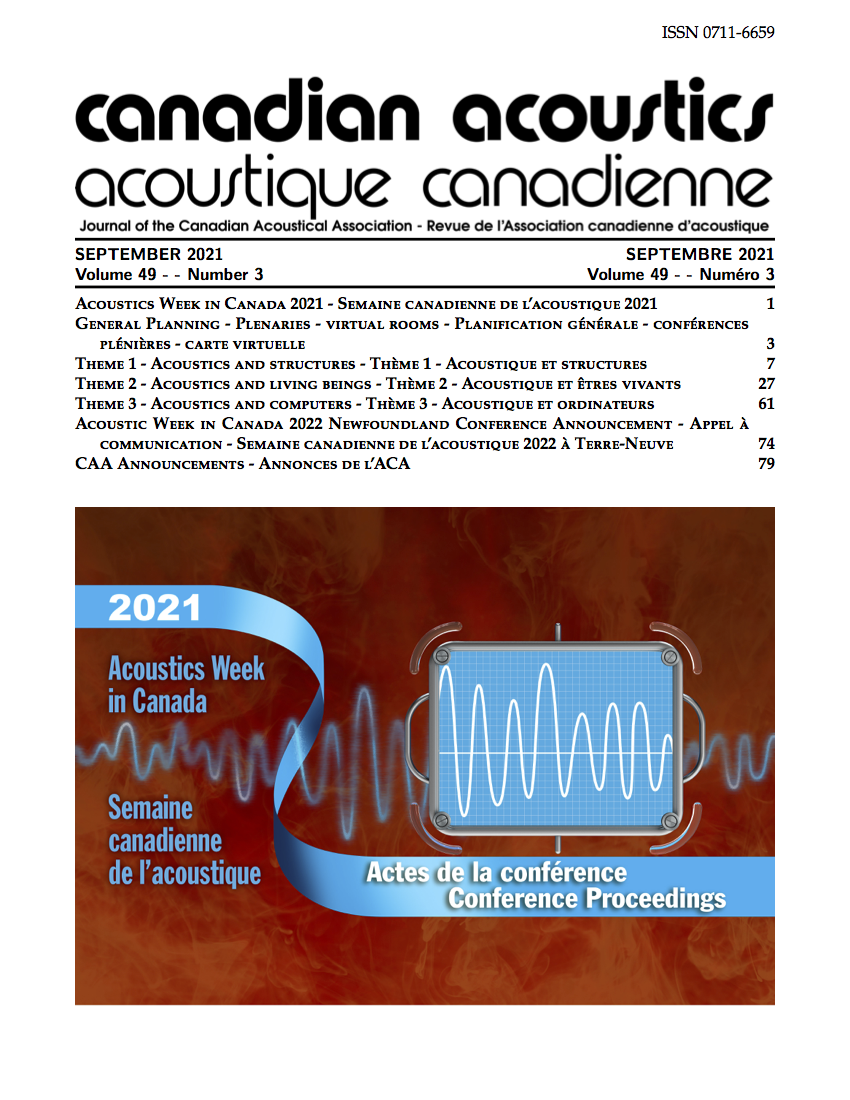Speaking Versus Smiling: The Labiodentalization of Bilabials in Korean
Résumé
Speech production generates many instances of conflict between synchronous movements in opposing directions. Previous research has identified such instances of conflict between smiling (lip spreading/opening) and bilabial sounds (lip compression/closing), resulting in labiodentalized variants of English bilabial stops (i.e., /p/ → [f]) [Chan et al. 2018, JASA, 144(3)]. However, because labiodentals exist in English, it remains unclear whether this resolution is physiological or phonological (i.e., learned substitution). The present study investigates the articulation of bilabials in neutral and smiled contexts in Korean, a language with no labiodentals. Tokens were extracted from natural running speech of 24 YouTube interviews and vlogs (26 speakers) using OpenFace 2.0 [Baltrusaitis et al. 2018, IEEE]. Activations of associated facial Action Units (AU), “lip corner puller” (AU12) and “lip tightener” (AU23), in the production of bilabials were analyzed. As in English, labiodentalization of bilabial stops was observed during smiled conditions, indicating that it is a physiological rather than phonological process in Korean. In the smiling condition, AU intensity results reveal decreased “lip corner puller” activity during bilabial closures and decrease “lip tightener” activity during labiodental closures, suggesting the body may resolve conflicts by suppressing one or the other movement.Fichiers supplémentaires
Publié-e
Comment citer
Numéro
Rubrique
Licence
Author Licensing Addendum
This Licensing Addendum ("Addendum") is entered into between the undersigned Author(s) and Canadian Acoustics journal published by the Canadian Acoustical Association (hereinafter referred to as the "Publisher"). The Author(s) and the Publisher agree as follows:
-
Retained Rights: The Author(s) retain(s) the following rights:
- The right to reproduce, distribute, and publicly display the Work on the Author's personal website or the website of the Author's institution.
- The right to use the Work in the Author's teaching activities and presentations.
- The right to include the Work in a compilation for the Author's personal use, not for sale.
-
Grant of License: The Author(s) grant(s) to the Publisher a worldwide exclusive license to publish, reproduce, distribute, and display the Work in Canadian Acoustics and any other formats and media deemed appropriate by the Publisher.
-
Attribution: The Publisher agrees to include proper attribution to the Author(s) in all publications and reproductions of the Work.
-
No Conflict: This Addendum is intended to be in harmony with, and not in conflict with, the terms and conditions of the original agreement entered into between the Author(s) and the Publisher.
-
Copyright Clause: Copyright on articles is held by the Author(s). The corresponding Author has the right to grant on behalf of all Authors and does grant on behalf of all Authors, a worldwide exclusive license to the Publisher and its licensees in perpetuity, in all forms, formats, and media (whether known now or created in the future), including but not limited to the rights to publish, reproduce, distribute, display, store, translate, create adaptations, reprints, include within collections, and create summaries, extracts, and/or abstracts of the Contribution.


